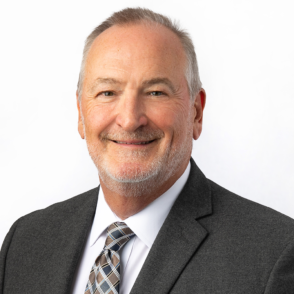By Paul G. Smith, Corporate Senior Vice President, Carrier Relations, H.W. Kaufman Group
As reported in our earlier quarterly overviews, 2020 was unparalleled from any vantage point. Beyond the onset of a global pandemic early in the year, rates were already rising, capacity was being deployed much more acutely, and terms & conditions were being underwritten more vigorously as the flight to quality continued.
As the year progressed from its rocky start, matters only seemed to mount:
- Small businesses were shuttered
- Work from home became commonplace resulting in increased security risks and other exposures previously underestimated
- Coverage concerns mounted as policy terms and conditions were being regularly tested in courts relative to the application of Business Interruption and Liability coverage stemming from the pandemic
- Business exposures were changing daily as manufacturers moved to new areas of developing hand sanitizers and personal protective equipment, while real estate holdings were converting to medical facilities, just to name a few
- Mother Nature did not take a break either. We experienced more Atlantic named storms than ever before, many making landfall along the Gulf Coast, while wildfires raged in Western states along with convective storms impacting Midwest states.
Despite these headwinds and extraordinary times, the global Property & Casualty (P&C) marketplace remained vigilant and adapted to meet the needs of policyholders. New capital came into the marketplace in unprecedented fashion—strengthening existing balance sheets, expanding the scope of others, and creating new capacity.
Carriers exercised outstanding flexibility to swiftly address the changing landscape of exposures, coverage concerns, and more fundamental matters, such as increased regulation, severity, and frequency. The resiliency of the P&C insurance industry and resulting marketplace remains strong irrespective of the many challenges.
In many ways, 2021 is expected to see more of the same, with rates increasing broadly across the spectrum, capacity being guarded quite closely, and terms & conditions more systematically aligned with underlying exposure. Superior players in the marketplace will thrive this year—although it will take more time, work, and a reliance on trusted partners. In a ‘flight to quality,’ strong industry leaders will find the path to more sustainable profitability.
RATE
Further to our earlier outlook regarding rates, momentum continued through Q4 2020 in most lines of business. Interestingly, when measured monthly in the final quarter of the year, each showed increases, according to a recent report by Ivans.
Most notable increases were reported in:
- Business Owners Policy (BOP) rates increased on average by 4.57% in Q4
- Commercial Property average rate increases in Q4 was 5.62% up from 5.3% in Q3
- General Liability rates increased by 3.47% in Q4, a slight uptick from Q3
- Commercial Auto rates on average increased by 4.46% in Q4
- Umbrella/Excess rates increased by 3.46% in Q4 as compared to 3.09% in Q3
Our outlook is to expect commercial rate increases to hold steady and possibly gain additional momentum well into 2021 as Insurers continue to address inadequate underwriting returns, accelerating casualty loss trends, rising reinsurance costs, still-low interest rates, and increased losses and risk sensitivity from the COVID-19 pandemic.
CAPACITY
We can again report no shortage of capital coming into the industry, most of which is earmarked for the U.S. Excess & Surplus (E&S) marketplace. It seems a day does not go by without some news of a new market entrant, capital influx into existing and new (re)insurers, developing and expanding MGA platforms, and more.
While conventional wisdom would suggest more capacity may lead to rate relief, the reality is markets continue to deploy capacity much more systematically and controlled as they pursue the flight to quality. While individual account limits and overall aggregate are being more carefully managed, the necessity to differentiate risks and underscore their unique characteristics has arguably never been greater.
TERMS & CONDITIONS (T&C)
Not dissimilar to rate or capacity, the aforementioned flight to quality is multifaceted as carriers are not only seeking more premium for less limit, but also managing exposure through close scrutiny of policy terms and conditions. Beyond the obvious surge in virus and communicable disease exclusions on most policies over the last year, many other coverages are carefully considered and not included as readily as they were previously. The pandemic has underscored the importance of policy clarity and the value of coverage extensions, exclusions, and related language in the event of a loss. Insureds and their brokers should carefully review proposals to ensure adequate coverage relative to the risk profile.
NEW MARKET ENTRANTS
The market environment for 2020 startups—expanded and scale-up (re)insurers, which we anticipate continuing into 2021—is reminiscent of 2001, as underlying portfolios of the P&C sector have evidenced signs of stress that require improvement. Such conditions create the perfect opportunity for new capital that we believe has staying power not dissimilar to many of the 2001 startups that are still viable or have been folded into other organizations through acquisition. That being said, there are also major differences, such as the interest environment today being close to zero—pushing incumbents to steadily raise rates, and vigilantly guard terms, conditions and limit deployment. The extreme benefit of new entrants remains their unencumbered balance sheets that do not contain legacy losses and related uncertainty allowing them to be opportunistic as they find their way into placements with existing participants scaling limits back.
Startups:
- Vantage – The Dinos Iordanou lead insurer recently stated it “will benefit from steps taken by the likes of Lloyd’s, AIG and Chubb to drive pricing corrections.” Vantage has continued its build out from their launch in June 2020 with the addition of long term industry names such as Jack Kuhn formerly Sompo and Chris McKeown formerly of New Ocean.
- Inigo – Founded by former Hiscox CUO Richard Watson, they secured $800mm in Q4 and are now set to start writing business this year at Lloyd’s having bought StarStone Underwriting Ltd and the rights to operate Syndicate 1301 from Enstar and Stone Point.
- Core Specialty – This specialty P&C Carrier, launched in November 2020, is led by Ed Noonan and Jeff Consolino who secured capitalization of over $900mm from selected investors and management recapitalizing StarStone US Holdings. They are rapidly expanding into a diversified range of P&C products intended for small to mid-sized business. They include excess transportation through Lancer Management and primary Product Liability to name a few.
Expanded Appetite:
- Ascot U.S. – Under leadership of their new Group President Jonathan Zaffino who joined them in 2020, this expansive insurer is quickly ramping up operations with talent acquisition in areas such as Primary and Excess Casualty, Programs, Environmental and more.
- Skyward Specialty – Previously known as Houston International Insurance Group (HIIG) has broadened its offerings bringing on John Burkhart as President of Specialty Lines and expanding responsibilities of Kirby Hill as President of Specialty Programs & Industry Solutions. This insurer has not only rebranded, but is clearly moving in a different direction than its legacy company under the leadership of newly minted CEO Andrew Robinson.
FORECAST BY LINE OF BUSINESS
Our industry leading subject matter experts dissected the marketplace and provided insights on the Burns & Wilcox Eye on 2021: Specialty Insurance Overview webinar, hosted January 7, 2021. They provide further guidance as follows delving deeper into specific areas with advice and outlook. Click here to view the complete webinar.
Personal Insurance:
A focus in 2021 is handling catastrophic events like hurricanes and wildfires, which have battered the market the last couple of years, said Bill Gatewood, Senior Vice President, National Practice Group Leader, Personal Insurance, Burns & Wilcox, Detroit/Farmington Hills, Michigan. The level of unprofitability has been unsustainable for carriers and that needs to change.
This fact makes it critical for carriers to find a balance to achieve profitability. Terms and conditions and other guidelines will tighten further, and rates will increase. The flight to quality will include the need for superior underwriting.
Access to the market is critical and Burns & Wilcox has been successful with this in such hard-hit claims areas as Florida and California. Capacity exists, but it may need to be split into multiple, smaller segments from different carriers, adding to the need for relationship building with trusted partners. Burns & Wilcox continues to develop partnerships with such trusted partners every year, including Wildfire Defense Systems, which directly saved $20 million of property from wildfire damage in 2020.
Burns & Wilcox also finished with more capacity in 2020 than it did at the start of the year, often with the help of the London market. Further capacity is expected again by the team in 2021, Gatewood added.
For more information, click here to view our Eye on 2021: Personal Insurance video highlight.
Professional Liability:
The SolarWinds breach, discovered by a prominent cyber security firm in December of 2020, is a reminder of the importance of cyber risk in the marketplace, and the constant challenges that businesses face in protecting their IT systems and reliance on their supply chain, said David Derigiotis, Senior Vice President, National Professional Liability Practice Leader, Burns & Wilcox, Detroit/Farmington Hills, Michigan. Having occurred during a global pandemic has added to the challenges given the increase in remote work and accelerated digital migration. With any Cyber policy, it is important for businesses to review policy language to understand what restrictions, such as how a government announcement attributing attacks to a foreign power, could prevent coverage from being triggered.
Throughout 2021 the impact of telecommuting, cloud-based technology and home delivery for both products and services – often for remote workers – will be felt. Companies that start to implement a “return to work” plan as the pandemic’s impact slows will also be closely watched.
In other professional areas, Directors and Officers (D&O) continues to experience a hard market, with COVID having accelerated that trend. An expected increase in bankruptcies through summer 2021, with decreasing governmental assistance, is possible. Various Healthcare lines will also continue to experience hardening, and reduced capacity, Derigiotis said.
Burns & Wilcox anticipated some of these trends, investing in hiring knowledgeable professionals and providing unique programs for not just healthcare, but clients in the construction sector seeing an uptick in work. The relationship established with digital risk insurer Node International in 2019 has further strengthened the available offerings in that field.
For more information, click here to view our Eye on 2021: Professional Liability video highlight.
Commercial Insurance:
Substandard underwriting was commonplace in the early mid-2000s and was first discovered on a large-scale following Hurricane Katrina, and this industry weakness continued to follow other catastrophic events over the years, said Blaise D’Antoni, Executive Vice President, Burns & Wilcox, South Region.
With 30 named storms, 12 of which hit land in the U.S. in 2020, further market tightening occurred even as the quality of underwriting has improved. Regional carriers that rely on the spread of risk from Florida to Texas have been the hardest hit. All Carriers are underwriting risks very carefully to find paths of opportunity to improved profitability.
The hard market should continue into 2022 with guarded capacity from Lloyd’s and other sources provided to only proven, reliable partners. Some wholesalers will lose market access as a result, D’Antoni said, however Burns & Wilcox has been preparing for such a market, so access and products remain possible. Many syndicates rely on the collective experience and network that Burns & Wilcox offers during such periods of stress.
For more information, click here to view our Eye on 2021: Commercial Insurance video highlight.
Casualty Brokerage:
The most dramatic impact to the casualty market has been an ongoing cavalcade of massive jury awards that have financially hurt carriers, said Marc Adler, Managing Director, Burns & Wilcox Brokerage, Scottsdale, Arizona. This trend has been in place for several years and has increased the volatility of all casualty lines of business.
It has resulted in carrier appetite changes in coverage, especially for those industry verticals hit hard by the coronavirus, like habitational and hospitality. It has also resulted in shorter limits being deployed often with rising premiums costs. While capacity remains available, it is more complicated to secure than previous years, and requires much greater diligence.
Our teams of experienced professionals will be heavily relied upon to create programs securing the necessary coverages throughout 2021, underscoring the need for greater communication with partners. “Most accounts are likely to undergo changes in coverage, limits, deductibles, etc., so it is imperative to review all the details,” Adler said.
Most carriers have experienced unsustainable loss trends over the last few years and were hit hard by exponential verdicts and settlements. They are adjusting the underwriting process by providing shorter limits resulting in a greater number of participants to fulfill limit requirements. Finally, Adler says “professionals should place close attention on initial notices sent from Carriers outlining renewal changes. Ask questions and communicate early and often so details are not missed.”
For more information, click here to view our Eye on 2021: Casualty Brokerage video highlight.
Property Brokerage:
As with other areas, 2021 is expected to look much like 2020, said Barry Whitton, Managing Director, Burns & Wilcox Brokerage, Atlanta, Georgia. Carriers have been making changes to segments where they had been losing money in coastal or habitational areas since early 2019 and are continuing focused underwriting on individual occupancies in an attempt to increase profits. Capacity exists, but it requires quality and thoughtful underwriting.
Every carrier took it on the chin with repeated, multiple losses, or how Whitton put it, “death by a thousand paper cuts.” While capacity exists, the flight to quality will be an overarching theme this year. Property is another area where terms and conditions have changed recently, requiring more attention be paid to the details.
“To get the best outcomes, communicate with markets and clients, take the time to review, and consider alternatives,” Whitton said.
For more information, click here to view our Eye on 2021: Property Brokerage video highlight.
CONCLUSION / SUMMARY
While 2020 was unparalleled from any vantage point, we anticipate 2021 to have continued rate firming, closer management of policy terms & conditions, careful distribution of aggregate and limit, with a continued march toward sustainable profitability. While Q4 and full year 2020 earnings season for publicly traded members of the Insurance sector commence, as of this writing, our outlook is for a potentially bumpy ride as they update COVID-19 reserves and further quantify losses from significant 2020 CAT activity.
Shifting legal decisions in multiple jurisdictions as well as evolving COVID-19 exposure in unexpected portfolios are weighing heavily on industry loss estimates and will likely result in a fluid situation. Further, uncertainty surrounding the economy and when it will return to some semblance of normalcy remains to be seen—impacting our 2021 outlook as we advise caution.
While the marketplace is challenging, we are better equipped than ever throughout our organization with seasoned industry veterans that are prepared to assist our retail agents and clients alike during these unsettling times.
Disclaimer: The above information has been prepared solely for the purpose of sharing general information regarding insurance and business practice management issues. These are just our opinions and are not intended to constitute legal advice or a determination on issues of coverage.










